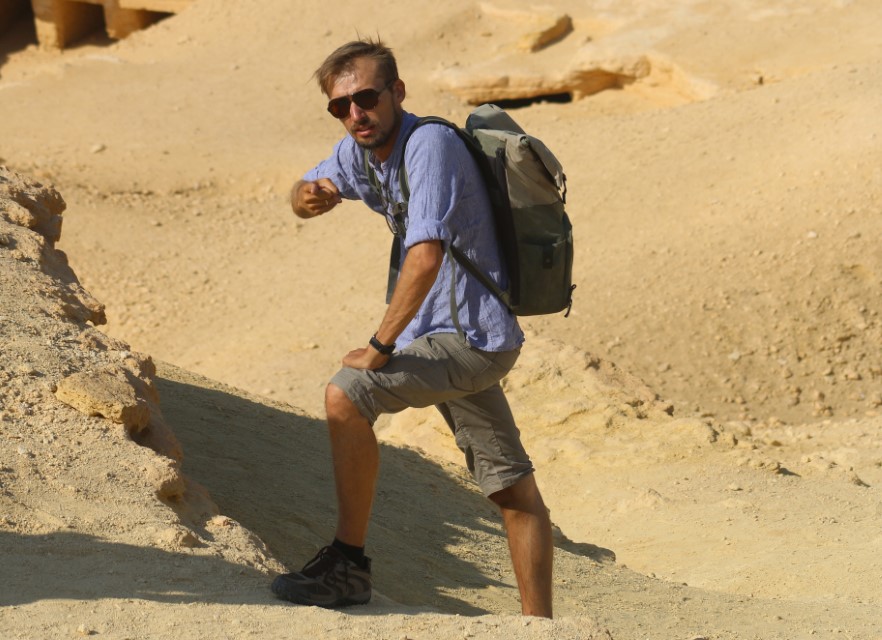-
Principal Investigator: Dr. Mariusz Gwiazda
Contact: m.gwiazda2@uw.edu.pl

Project collaborators:
Dr. Emilia Smagur
Dr. Robert Stark
Iwona Zych
Prof. dr hab. Monika Badura
Paweł Czernic
Anna Konopko
Alexandra KonstantiniduProject term:
October 2022 to October 2025
Budget:
PLN 1 146 915,62
Funding:
National Science Centre Poland, Sonata 17, 2021/43/D/HS3/00248

-

Cultural, demographic and biological profiles of post-Roman (4th–6th century CE) inhabitants of the port of Berenike (Egypt), based on non-invasive, excavation and bioarchaeological studies of two urban necropolises
Keywords: Burial customs, ancient demography, bioarchaeology, archaeology, Eastern Desert, Egypt, late Antiquity, Berenike
The objective of the project is to provide new insights into the communities inhabiting the Eastern Desert during the post-Roman period (4th–6th century CE) through a study of the necropolis of the port city of Berenike (Egypt) located on the Red Sea coast. It will include studies of the diversity in the biological profile of the local community, as well as of the burial customs, which have not been the subject of systematic inquiry to date. Evidences from new research at two necropolises located on the western fringes of the settlement will be collected and analysed. The study will make it possible to determine how biologically and culturally uniform the local community was.
These two necropolises from the post-Roman period will constitute the main basis for the reconstruction of the commemorative habits, which consist of different burial forms and grave furnishings. A great deal of diversity is expected in these areas. The potential richness in funeral customs will indicate the mixed nature of the community inhabiting Berenike in the 4th–6th century CE.
The anthropological approach will enable the reconstruction of the social structure of the city and facilitate the understanding of the living conditions of presumably distinct population groups. This will be based on identification of the growth, health, and lived experiences of these groups.
The use of the combined results of archaeological and bioarchaeological studies provides a viable basis not only for reconstructing the funeral customs, but also for capturing nuanced insights into the social realities of this settlement. This will enable studies to be undertaken on the structure, hierarchy, and health status of potentially distinct population groups. An analysis of botanical macroremains from the stomachs of the buried individuals will also make it possible to take into account the differences and similarities in the diet between individuals. Thus, the project will represent a departure from the historical and art-historian approach that dominates Egyptian tomb archaeology.
Although the region was peripheral in ancient times, it was crossed by trade routes connecting the Roman Empire to Axum, the Kingdom of Himyar, and the empires and kingdoms of Central Asia. This is the main explanation for the widespread interest in this region, in which Berenike is the central point of reference. Consequently, the results of the studies conducted at this site are linked to broader historical narratives and the question of cross-cultural relations. This project will also ensure a significant advance in the study of one of the lesser-known North African states formed by the federation of Blemmyan tribes. Information on the demographic structure and the degree of biological heterogeneity will provide a detailed and solid profile of this community, which will yield new prospects for research into the society.
Associated events:Lectures and conference presentations:Project bibliography:Links
- More about Berenike
- Berenike Project website: www.berenike.pcma.uw.edu.pl
- Osteological database: www.osteo.pcma.uw.edu.pl
- Berenike Project on Facebook
- Berenike Project on Twitter
- Berenike Project on Instagram
